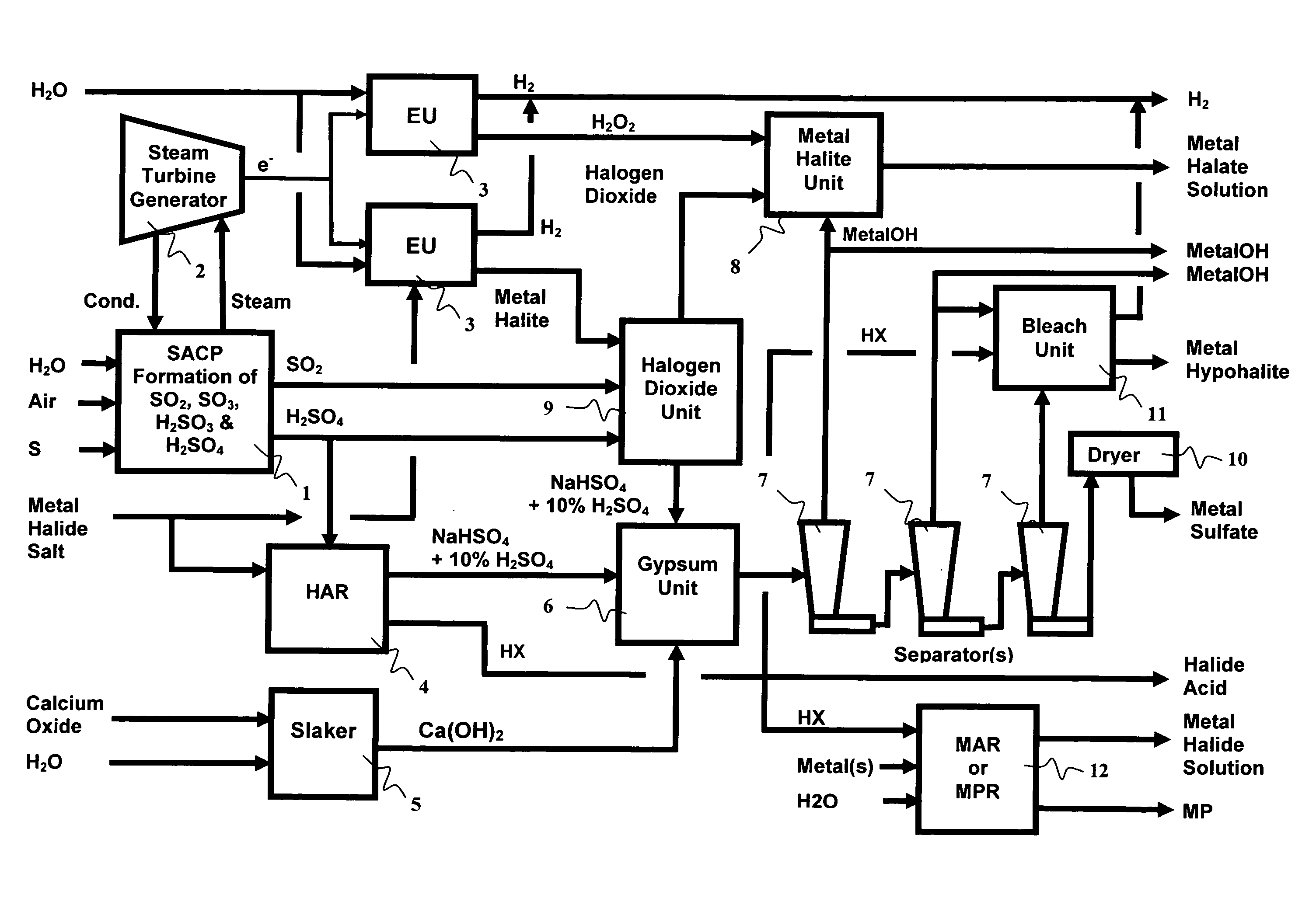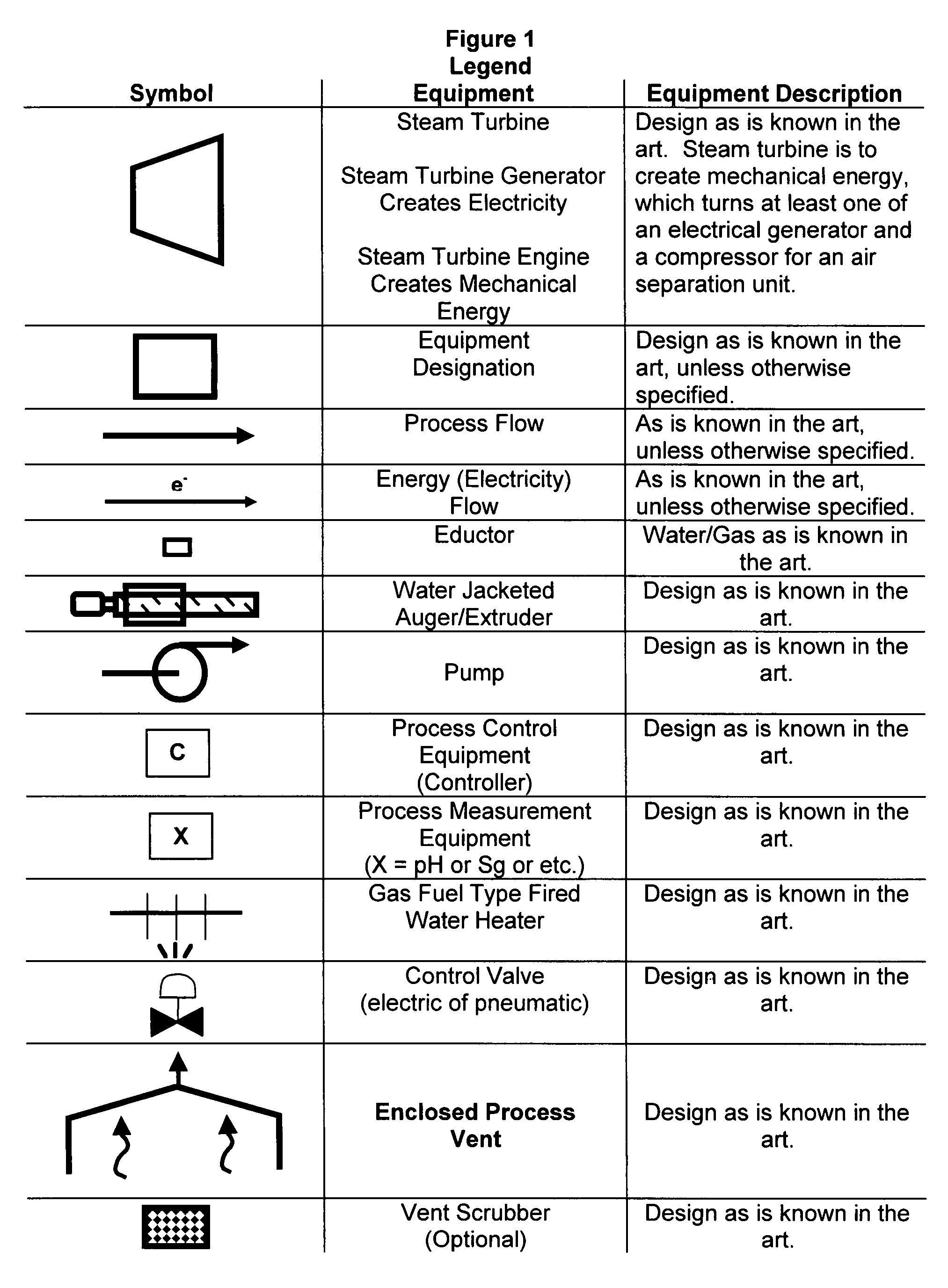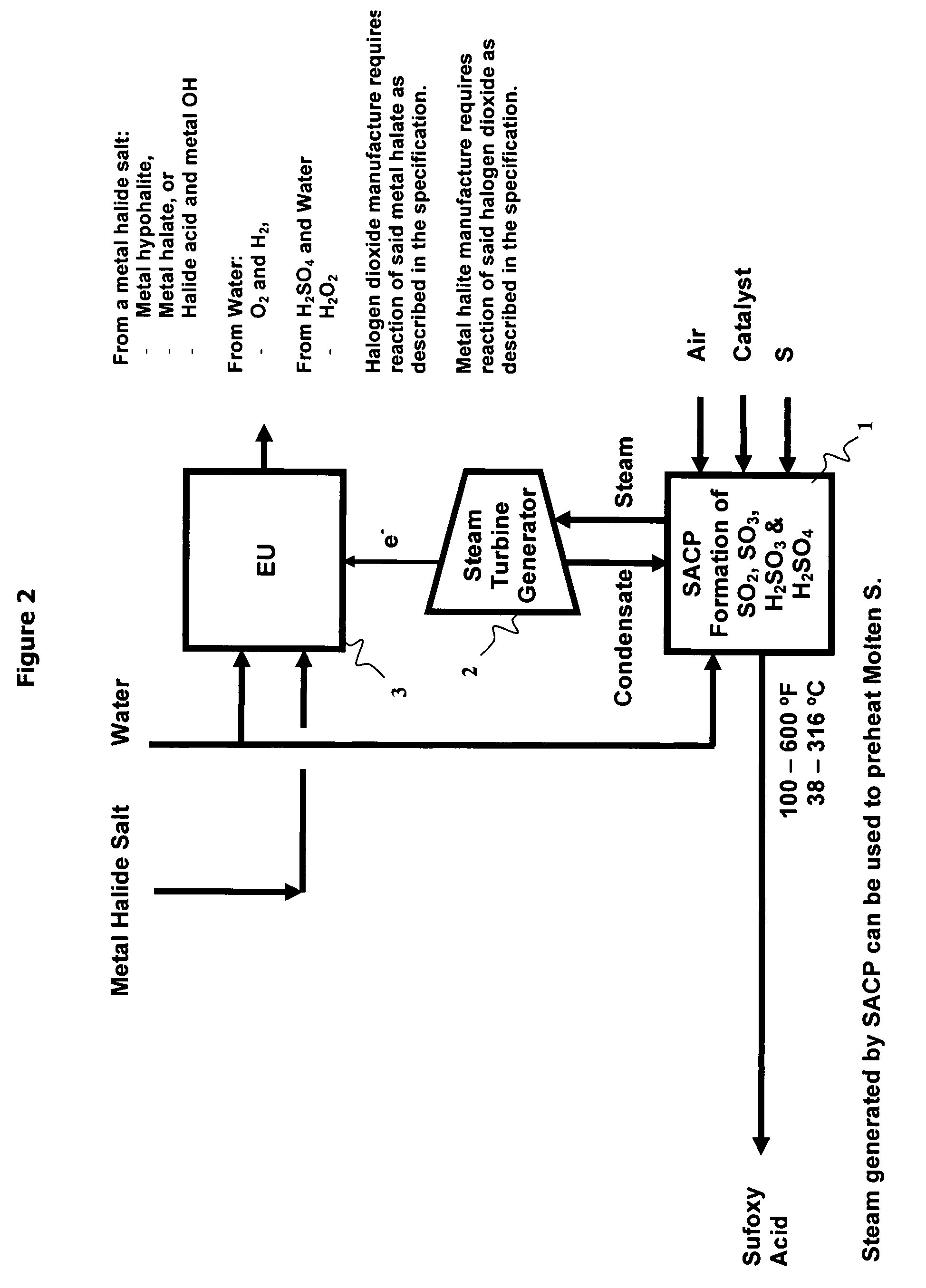Manufacture of water chemistries
a technology of water chemistry and manufacturing process, which is applied in the field of water chemist manufacturing, to achieve the effect of reducing the cost of production, and improving the purity of gypsum
- Summary
- Abstract
- Description
- Claims
- Application Information
AI Technical Summary
Benefits of technology
Problems solved by technology
Method used
Image
Examples
example 1
[0228]Chlorine gas is slowly bubbled into a 1-L beaker until the Sg of the aqueous solution is approximately 1.08 to 1.1. The acidic solution is continuously stirred and heated to 60° C. for 15 minutes; after which, 50 grams of aluminum metal are dissolved into solution while slowly stirring for 15 minutes to prepare the ACS. 300 ml of this ACS having an aluminum content of approximately 5% is then heated to 120 C and stirred vigorously while slowly adding 30 gm of Al(OH)3 powder. The system is kept at 120° C. and stirred vigorously for 3 hours, after which all of the powder is noted to have gone into solution. The liquid was allowed to cool. The final product was a cloudy liquid having an aluminum content of approximately 10%.
example 2
[0229]Chlorine gas is slowly bubbled into a 1-L beaker until the Sg of the aqueous solution is approximately 1.08 to 1.1. The acidic solution is continuously stirred and heated to 60 C for 15 minutes; after which 100 grams of Al(OH)3 powder is dissolved into solution while slowly stirring for 165 minutes to prepare the ACS. 300 ml of this ACS having an aluminum content of approximately 5 percent is then heated to 130° C. and stirred vigorously while slowly adding 30 gm of Al(OH)3 powder. The system is kept at 130 C and stirred vigorously for 3 hours, after which all of the powder is noted to have gone into solution. The liquid was allowed to cool. The final product was a cloudy liquid having an aluminum content of approximately 10 percent.
example 3
[0230]An ACS from Gulbrandsen Technologies, GC 2200, was utilized for the ACS. This sample of GC 2200 measured 10.1 percent Al2O3 having a Sg of 1.28 and due to the yellow color contained iron. To an autoclave, provided with a stirrer, 300 ml of the ACS were added along with 5 gm of MgO from Premiere Services and 25 gm of laboratory grade Al(OH)3 powder. The mixture was heated to 120 C and stirred vigorously for five hours. The liquid was allowed to cool. The final product was clear having an aluminum content of approximately 6 percent and a magnesium content of approximately 2 percent.
PUM
| Property | Measurement | Unit |
|---|---|---|
| temperatures | aaaaa | aaaaa |
| operating temperatures | aaaaa | aaaaa |
| temperature | aaaaa | aaaaa |
Abstract
Description
Claims
Application Information
 Login to View More
Login to View More - R&D
- Intellectual Property
- Life Sciences
- Materials
- Tech Scout
- Unparalleled Data Quality
- Higher Quality Content
- 60% Fewer Hallucinations
Browse by: Latest US Patents, China's latest patents, Technical Efficacy Thesaurus, Application Domain, Technology Topic, Popular Technical Reports.
© 2025 PatSnap. All rights reserved.Legal|Privacy policy|Modern Slavery Act Transparency Statement|Sitemap|About US| Contact US: help@patsnap.com



